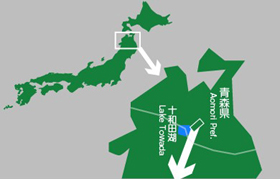Oirase Gorge: Walking Course through Lush Greenery and Magnificent Waterscapes

Lake Towada in Aomori Prefecture and Oirase River, which is the one and only river flowing out of that lake, are designated as a Special Place of Scenic Beauty and Natural Monument. The volcanic Mt. Towada became active about 200,000 years ago, and water gathered in the depression caused by eruptions, eventually forming a lake. Later, what is now Lake Towada collapsed, causing major floods for a long time. It was in this period that the large gorge was formed. The Oirase Gorge refers to the whole length of the river flowing through it. Like Oirase River, National Highway No. 102 also threads it way alongside the gorge. Along the 15 km stretch from Nenokuchi on Lake Towada to Yakeyama Onsen, which is one of the Towada Onsen hot-spring resorts, it is possible to view the beautiful gorge and several waterfalls on both sides of it. Most people follow the well-kept walking course from Yakeyama, which is easily accessible from Towada City and Aomori City, toward the source of the river. In particular, the 9 km stretch from Ishikedo Rest House has many lookout points and is just the right distance for a ramble. Even taking leisurely breaks to view the flowing river, you will reach Nenokuchi on Lake Towada in three or four hours. When I visited to take photos and videos, I left my car at the Ishikedo Rest House car park and headed toward Nenokuchi from the nearby Samidare Current.
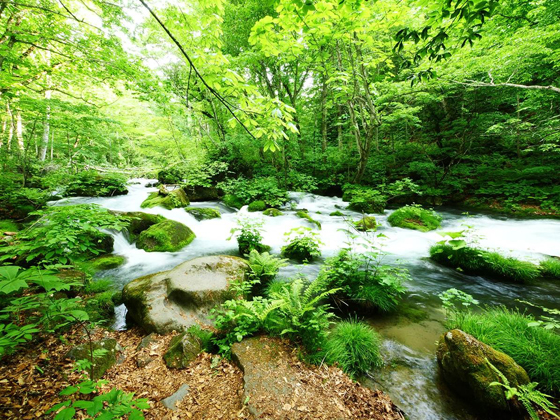
Oirase Gorge with its beautiful flowing water Video: https://youtu.be/91GzK8GLHTQ
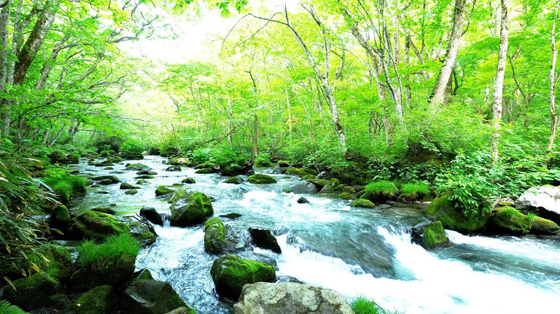
Samidare Current
Video: https://youtu.be/UorIgC6BhNA
The Samidare Current is one of the most outstanding scenes along the Oirase Gorge. The large rugged rocks in the river seem to have been placed in a very orderly manner. Apparently the name Samidare, which means “three disorderly” channels, comes from the fact that the rocks cause the single flow of water to fork into three branches. Together with the surrounding woodland, it is a truly breathtaking sight.
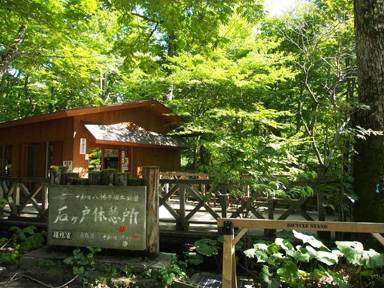
Ishikedo Rest House
Many people arrive at the Ishikedo Rest House by bus or car and then set off on their walk. The rest house displays a three-dimensional model of Oirase Gorge and panels explaining its history to give visitors a good understanding of the area. There are also toilets and a souvenir shop serving light meals, so the rest house is always bustling with travelers.
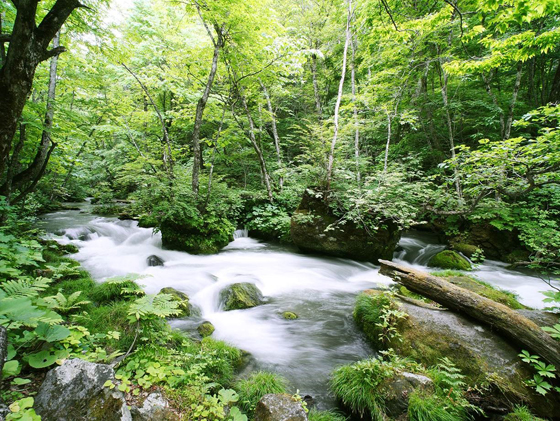
Ishikedo Shallows Video: https://youtu.be/B8CYED7wiow
To reach the walking course, take the outer corridor from the Ishikedo Rest House entrance and go down the steps. As you proceed along the course, viewing the beautiful limpid flow of the river to your right, suddenly the river becomes narrower and the water flows more rapidly. You have arrived at the Ishikedo Shallows. Unlike the Samidare Current that you just observed, the mossy rocks of varying sizes here are arranged in an irregular manner, yet overall it appears like a very well-balanced work of art. Suggestive of the long history of Oirase, there are trees growing from the large rocks. Lots of people quietly gaze at the sight, no doubt sensing the sublimity of nature.
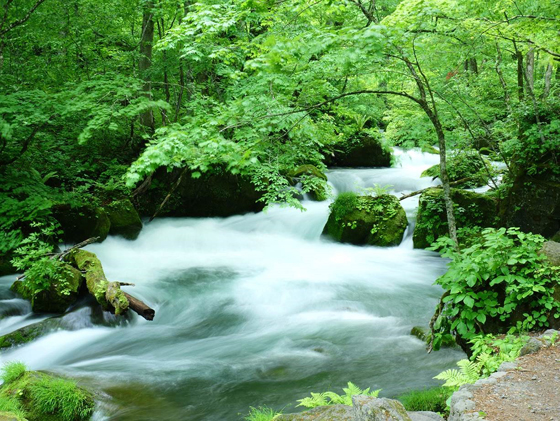
Ashura Current Video: https://youtu.be/8p_25BYc350
Walking a little way upstream from the Ishikedo Shallows, on the right you will see a rocky cliff of ignimbrite (rock formed by pyroclastic flow deposits), which gives a glimpse of the origins of Oirase Gorge. Just beyond here is the Ashura Current, which is probably the most representative of the gorge’s scenery. It lies about midway between Yakeyama and Nenokuchi. Cross the bridge just before it, and you will see the Ashura Current to the left of the walking course. The powerful and dynamic current rushes toward you, splashing its way past trees and rocks. It is a beautiful spectacle. Just like a Japanese-style painting! Photographs taken here are often used to illustrate Oirase Gorge as a whole. Lots of people stop at this point to observe the current, many of them enthusiastically setting up tripods to take photos. There are quite a few tourists from overseas as well, and chatter in languages other than Japanese can often be heard.
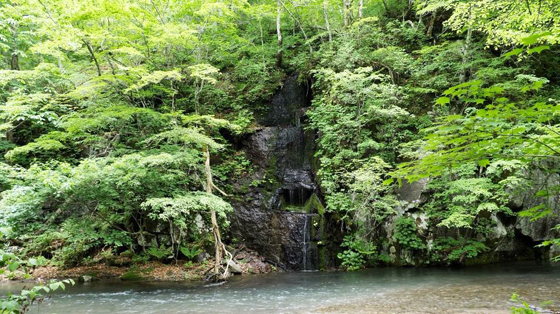
Chisuji Falls Video: https://youtu.be/ExPOj6jvXEs
About 10 minutes’ walk from the Ashura Current you will see, on your left, a rock wall that again symbolizes the history of Oirase. The wall is divided into several layers, and spring water trickles down it in several rivulets. It is a quiet, beautiful, exquisite sight. There are benches here, so visitors can enjoy a chat while gazing at the waterfall.
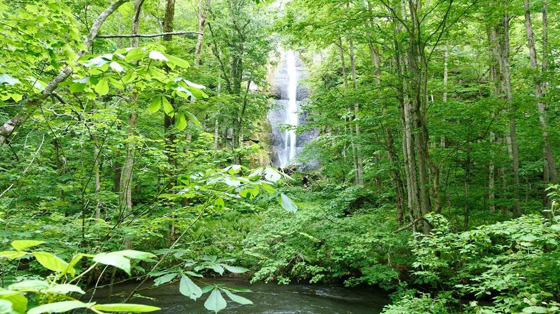
Shiranuno Falls Video: https://youtu.be/SmWIJyBfvOs
Water flows from the surrounding mountains into Oirase Gorge in the form of mountain streams and waterfalls. Shiranuno Falls is one such waterfall. Just visible through the dense trees, it appears rather awe-inspiring in a way. Probably because of its distance from the river, the waterfall seems like something faraway, like an unfulfilled wish. One cannot help but feel a sense of affection for it.
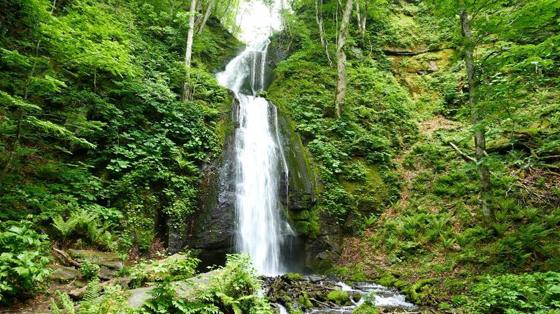
Kumoi Falls Video: https://youtu.be/lGKCrRWFMJQ
This waterfall is located in the mountain, a short distance from the walking course. While it can also be seen from the walking course, if you go up close, you can see the waterfall basin. With a height of 25 meters, the two-tiered falls have a beautiful cascade and create an impression of elegance.
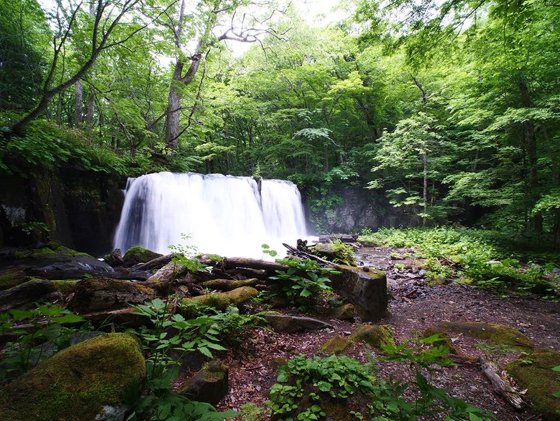
Choshi-Otaki Falls Video: https://youtu.be/zTGrAhSWlBM
The Choshi-Otaki Falls, which have a width of 20 meters and height of 7 meters, are the only waterfall plunging directly into the Oirase River. Since it is an obstacle to fish trying to swim back up the river to Lake Towada, this waterfall is also known as the “Fish-Stopping Falls.” This dynamic and stirring waterfall possesses a beauty that really is symbolic of Oirase Gorge. For a creation of nature, it is amazingly well-balanced.
My photography walk lasted five hours and covered around 10 km. Sometimes I recorded the flow of the river, sometimes the waterfalls beyond. Sometimes I was able to get near the dynamic waterfall basins too. And I also was able to enjoy the lushness of the new verdure, the freshness of the river, and the grand history of the area. You never tire of Oirase Gorge. Tourists flock here for more than half of the year, from spring to fall.
In order to protect the natural environment of Oirase Gorge, the local authorities are devoting much effort to deepening understanding and raising awareness of environmental preservation, including implementation of the Oirase Stream Eco-Tourism Project and regulations on cars during the autumn foliage season. I think it is very important for us to both enjoy and protect nature at the same time.
Photos and text: Arata Matsumoto, Sharata and Adwise, Inc.
URL: http://www.sharata.info/ (Japanese)
(Sharata supplies 4K videos of outstanding scenery in Japan so that as many people as possible can enjoy it.)

